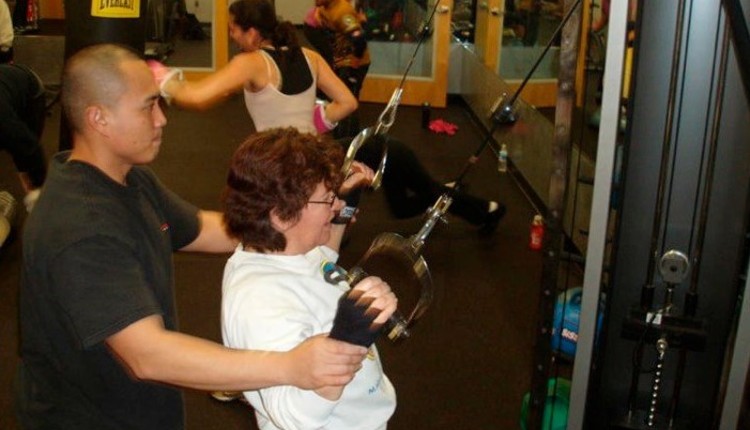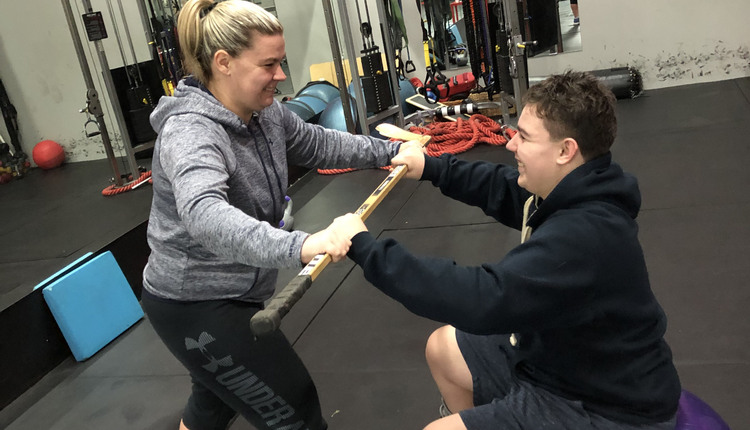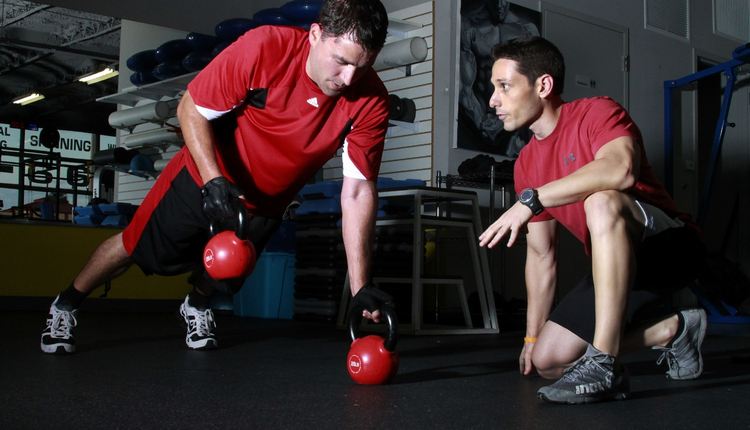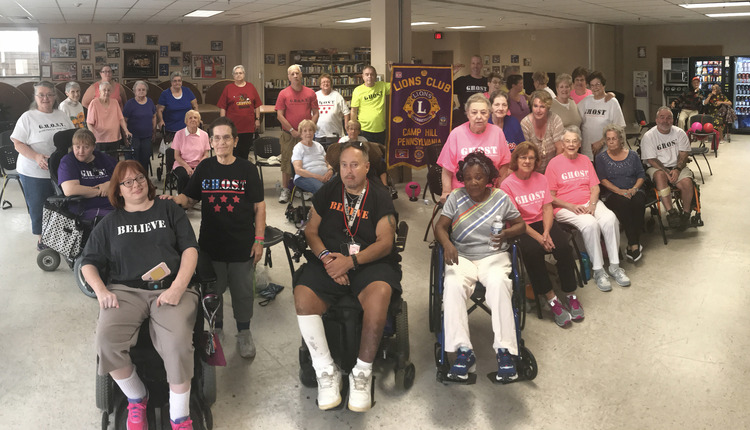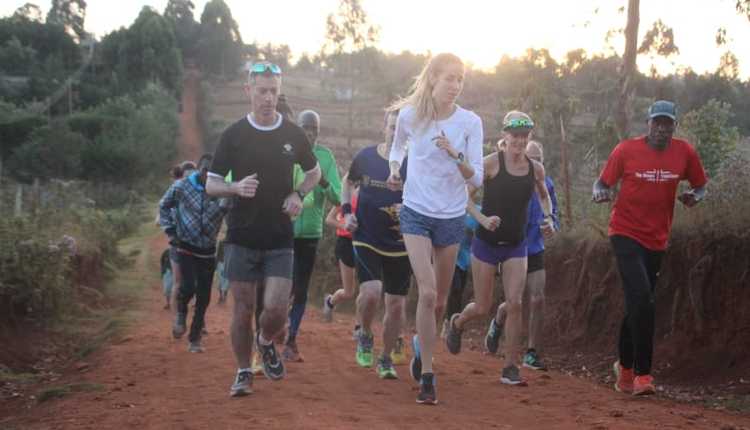Nicki Anderson realized early in life how painful it is to be obese. And when she discovered the nutrition/ exercise cure, she planted the seeds for a future career as a highly regarded trainer, successful business owner and champion of those who desperately need a helping hand to get their lives on track.
At 16, Anderson was 50 pounds overweight. With dreams of becoming an actress, Anderson understood that her weight was holding her back. All by herself, she began making changes. She added more fruits and vegetables to her diet and began riding her bike more, and slowly, the weight came off. Infatuated with her new lifestyle, Anderson picked up a part-time job at a health club just after graduation, which allowed her to surround herself with fitness during the day and attend college and pursue her acting at night.
Soon, Anderson moved to Chicago to further pursue her acting ambitions. Instead, she met her future husband. She left her theatrical aspirations behind, got married and eventually had four children. As a full-time mom, Anderson stayed true to the eating and exercise that had helped her years before. She also began freelance writing for children's magazines.
It was in a 1989 issue of Publisher's Weekly, oddly enough, that Anderson was led back to her true calling. "Want to be a personal trainer?" the ad read. That headline connected with her on a level that had been temporarily buried by the hustle of marriage and motherhood.
Anderson had just given birth to her third child and was dismayed by the number of other mothers and women who consistently put themselves down about their physical appearance or were trying crazy weight loss schemes. "The light bulb went off when I saw that ad and, literally, I knew that was my destiny," says Anderson.
Her husband needed some convincing, however. Personal training, at that point, wasn’t a well known vocation, it was a complete departure from freelance writing and in his mind, "wasn't a real career path."
Anderson had her mind set, however. While pregnant with her fourth child, she studied hard and received both her AFAA (Aerobics and
Fitness Association of America) and ACE (American Council on Exercise) certifications.
In 1991, Anderson's daughter was born and so was her life as a trainer. During that first year, she decided to train five women, pro bono, so she could make sure she really knew what she was doing. Anderson used these women not only as case studies but also as a source for honest feedback as she designed the forms, journals, exercise programs and everything else she would need for the business she had in the back of her mind.
Anderson launched her in-home training business, catering to those who were so obese or deconditioned that they preferred privacy. She put an advertisement in the local newspaper to get the word out.
And then she waited. And waited. And waited.
Anderson says back then, she didn’t realize that advertising takes time. She now recommends that new trainers go out and network with others, put a face with their name and build relationships and trust. Getting involved with the local chamber of commerce is key, she says.
"You have to pay your dues before people bang on your door," says Anderson. Almost two months later, she got her first call.
"It was one of the most exciting days of my life," says Anderson. Through the first year of her business, Anderson garnered 10 clients -- okay results if training is your hobby, but Anderson wanted a business, so she decided to buckle down.
"I created a business plan to transition (if I ever decided to open a studio or sell), I put together my vision, mission and value statement and put everything into systems, which I believe is crucial for every business... no matter the size."
After two years, Anderson had 15 clients and decided to hire another trainer. By her fifth year in business, she had four trainers, and the travel from home to home was wearing her down.
"Because my hours were so sporadic, I had little time to take care of myself and felt like I was not doing a great job of balancing work and family," she says. So Anderson began looking into a permanent location and opening a studio.
"I did a lot of research and, given that my ideal client is in the deconditioned, obese population, I wanted a facility that maintained the same sense of privacy that in-home training provided," says Anderson.
With an updated business plan and her husband/accountant’s agreement that it was the next logical step, Anderson took out a small loan and moved into an old building that had six separate offices in it and rented three -- two for private training rooms and the other for an office.
Because Anderson had built up credibility and reputation, she says she wasn't worried about the transition. In February 1998, Reality Fitness Personal Training Studio opened for business. Within the first six months, it had 25 clients and two other trainers. Two tenants in the building moved out, so Reality Fitness expanded and added two more training rooms. By 2001, the business was up to five trainers doing about 160 sessions per week. With a solid economy and the momentum of success, Anderson began traveling more to lecture and training less. Her absence sparked a drop in business.
In response, she hired a personal training manager, and things went from bad to worse. The economy also took a nosedive, and Reality Fitness had its first reality check.
It took Anderson two years to get back on track. She let unnecessary help go and eventually was doing well again. Right now, Anderson has seven trainers -- three are independent contractors and four are employees -- and she herself is training about 20 hours per week. She now utilizes one of her trainers to sub for her when she travels rather than training less, and she continues to freelance write and lecture about fitness, because she loves doing both.
In total, her studio now performs about 100 sessions per week. Anderson's goal is to get that to 140.
Anderson credits her commitment to customer service as the one thing that helped her business survive challenging times. Not only does every client get a private room to workout (which incidentally has opened her up to a discretion-seeking high profile market she hadn't expected), they also are greeted at the door by name and offered a towel, fresh fruit and a bottle of water.
"We think about our clients' wellbeing all the time," says Anderson. "It isn't uncommon for us to send them a relevant article or contact them just to tell them they are doing great!"
Anderson believes that the biggest deficit in the fitness industry right now is the industry’s inability to deeply serve the needs of its customers.
"Customer service is truly my 'secret' to success," says Anderson.




